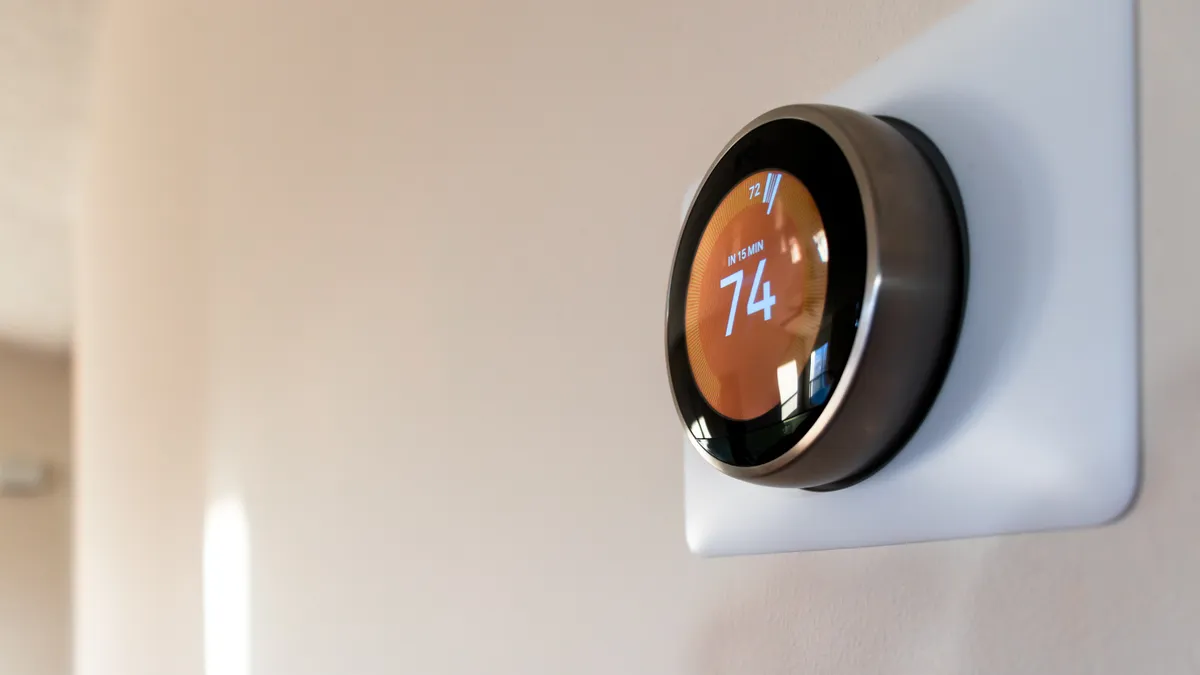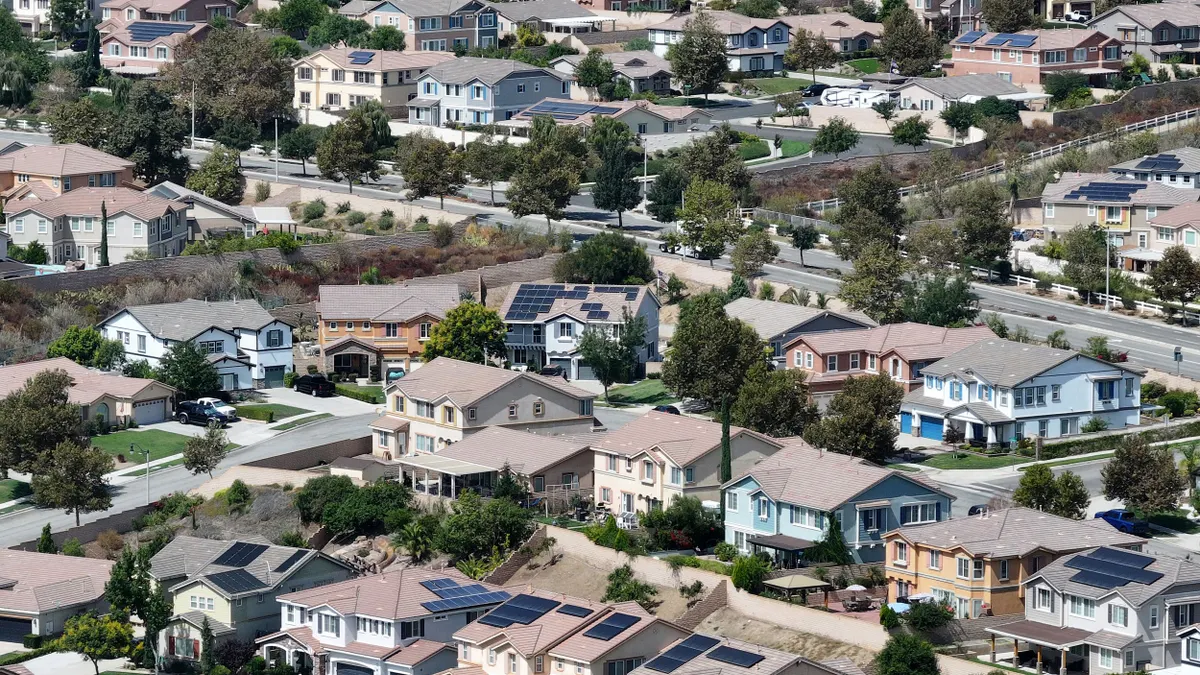One particularly cold winter in Charlotte, N.C., DeAndrea Salvador was struck by a conversation between her family and their longtime neighbor, Ms. Jacobs.
"She said she had blankets to keep her husband warm, but if she raised the temperature too much, she was worried she wouldn't be able to pay bills next month," Salvador recalled.
Salvador started searching her community to see what resources were available to help the Jacobs, and the connections grew from there.
In 2015, Salvador founded the Renewable Energy Transition Initiative (RETI), to find sustainable ways to lower energy costs for low income families in Charlotte, N.C., and surrounding areas. The group grew from her basic concern for neighbors and family, into a nonprofit organization with a staff of five, a board of directors and an advisory council.
After beginning with education and strategic partnerships, RETI is now helping Duke Energy Progress roll out its community shared solar project in South Carolina by helping qualify low-income participants and get program fees waived. Working with utilities, said Salvador, is one way to help more of the thousands of low-income households in the region.
"I always look for partnerships," she said. "Look for the people helping in their community."
That's good advice all around, and it also happens to be Duke's strategy.
"Engagement is one of the nuts we're trying to crack, to make sure we reach folks," Duke spokesman Ryan Mosier told Utility Dive.
Duke's 5 MW community solar program involves 1 MW of shared solar, of which 400 kW are carved out for low income customers in the company's South Carolina territory. The utility is working to use the best marketing channels possible to reach moderate and low income customers and linked up with RETI because of their community connections, says Duke's senior products and services manager, Stacy Phillips.
RETI "will help us build that relationship with [community action program] agencies," said Phillips, explaining that the group has connections in churches, schools, police and fire departments, and has connected locally with the NAACP.
Of the 400 kW of solar power that Duke carved out in its new program, 200 2 kW subscriptions are dedicated to households below 200% of the poverty line — which, Phillips reminds, is about $50,000 for a family of four. That includes a wide range of the community, from teachers to first responders.
And the same process used to qualify a customer for the low-income community solar program can also be used for Duke's weatherization programs, meaning RETI and CAP agencies can help customers take advantage of each simultaneously.
"Solar seems very exciting, but weatherization is still going to save their clients more money and [CAP agencies] should still focus on that," said Phillips.
"Low- and moderate-income solar is about those customers not being left behind in the solar revolution."

Stacy Phillips
Senior products and services manager, Duke Energy
This is a common refrain among those helping low income households take control of their energy use. While utilities are working to offer these customers more ways to participate in the new energy economy — shared solar and geographically-targeted public charging stations for electric vehicles are examples — energy efficiency is still the most effective measure. And among the most difficult to execute.
"Low- and moderate-income solar is about those customers not being left behind in the solar revolution," said Phillips. "There are environmental and economic benefits we don't want customers to miss out on... if they have an interest in solar, we can help deliver that product."
Utilities are making the effort
"It is safe to say, across the board, that utilities can be doing more" to reach low-income customers, Lauren Ross, local policy director at the American Council for an Energy-Efficient Economy (ACEEE), told Utility Dive. But without a doubt, there is a concerted effort being made.
Duke's shared solar program in South Carolina is one example and, depending on solar prices, the program may be rolled out in North Carolina as well. In Florida, Duke is installing electric vehicle charging stations in low-income neighborhoods.
Two weeks ago, regulators in New York approved recommendations aimed at boosting low-income access to community distributed generation, including a new bill discount pledge program, allowing customers to use a share of their monthly affordability program bill discount towards the purchase of shared generation subscriptions.
"The amount of solar energy in NYC and Westchester County has increased dramatically the past decade or so, but low-income customers have been shut out of the benefits."

Allan Drury
Spokesman, Consolidated Edison
Consolidated Edison, serving the New York City area, hailed the move.
"We favor making it easier for low-income customers to share in the benefits of solar energy," ConEd spokesman Allan Drury said in an email. "The amount of solar energy in NYC and Westchester County has increased dramatically the past decade or so, but low-income customers have been shut out of the benefits. We’re trying to change that."
ConEd's shared solar program will put solar panels on company properties, making the energy available to low-income customers. With the first phase, Drury said the utility believes it can produce 3 MW and serve 800 to 1,600 customers. "We think that in five years, we can produce 11 MW for 3,000 to 6,000 customers," he said.
Duke Energy is taking that same approach, said Phillips.
"There is a growing awareness, internally and from stakeholders, about not leaving low-income customers behind," said Phillips. "You always have to be thinking about how you meet each one of your market segments. In the solar space, shared solar is more likely to have that happen. When you think of all the reasons someone can't put solar on property a lot of those just so happen to be the challenges for our low- and moderate-income customers."
"Before you invest in a smart thermostat, you might as well first invest in the shell of the housing itself."

Lauren Ross
Local policy director, American Council for an Energy-Efficient Economy
Biggest savings, challenges are still in efficiency
A smart thermostat can save customers money by tweaking and optimizing settings, but that doesn't mean it's always the first solution, Ross said.
Ross noted a slew of possible upgrades to help increase energy efficiency within a house, such as investing in better installation, fixing air leaks or upgrading lighting.
"Before you invest in a smart thermostat, you might as well first invest in the shell of the housing itself," Ross said. "You really need to tighten up the structure first. ... That would be true for all households but it is certainly compounded for low-income households."
Ross is lead author of a recent ACEEE study that concluded rural households in the United States pay significantly more that urban households for electricity and heating — about 40% more, in part because these areas may lack efficiency programs available in urban areas.
And the difficulty in upgrading these homes is compounded when you account for home ownership: low-income households are disproportionately renters, which adds a host of other complicating factors. Owners of multi-family dwellings often do not have access to the kind of funds necessary for a building retrofit, and there is little incentive for a renter to upgrade a home they do not own.
Khalil Shahyd, senior policy advocate with the Resilient Communities program at the Natural Resources Defense Council, asks sarcastically, "Who knew low-income families are often forced to rely on older, outdated housing? That's across the board, in urban and rural areas."
In rural communities, smaller utilities often do not have the resources to run large efficiency offerings, said Shahyd. And for larger utilities, "the typical low income is just not seen as an effective investment... so they just avoid it."
Shahyd worked with Ross on the study, and agrees there are many challenges to bringing low-income customers into new energy programs. But new funding methods, such as on-bill financing and Property Assessed Clean Energy riders, are increasingly being used to make these upgrades possible when a resident may not have the credit score or home equity otherwise required.
And, Shahyd adds, it is important to change the general thinking around energy efficiency. For every $1 invested in efficiency in low income areas, $2 goes back into the economy, he said. "People like to think of energy efficiency as not a productive part of the economy... but it is very, both in terms of a human capital sense and direct environmental benefits."
But, along with weatherization programs, Ross said there is a growing interest in offering new products to income-challenged households. Earlier this year, for example, Nest Labs Inc. announced it would provide 1 million of the company's smart thermostats to low-income homes as part of its Power Project.
"We can upgrade homes and at the same time integrate these new technologies," Ross said, calling for a "balanced" approach to upgrades. "We are seeing emerging approaches to try and get more connected devices, more smart devices, into low income households."





















